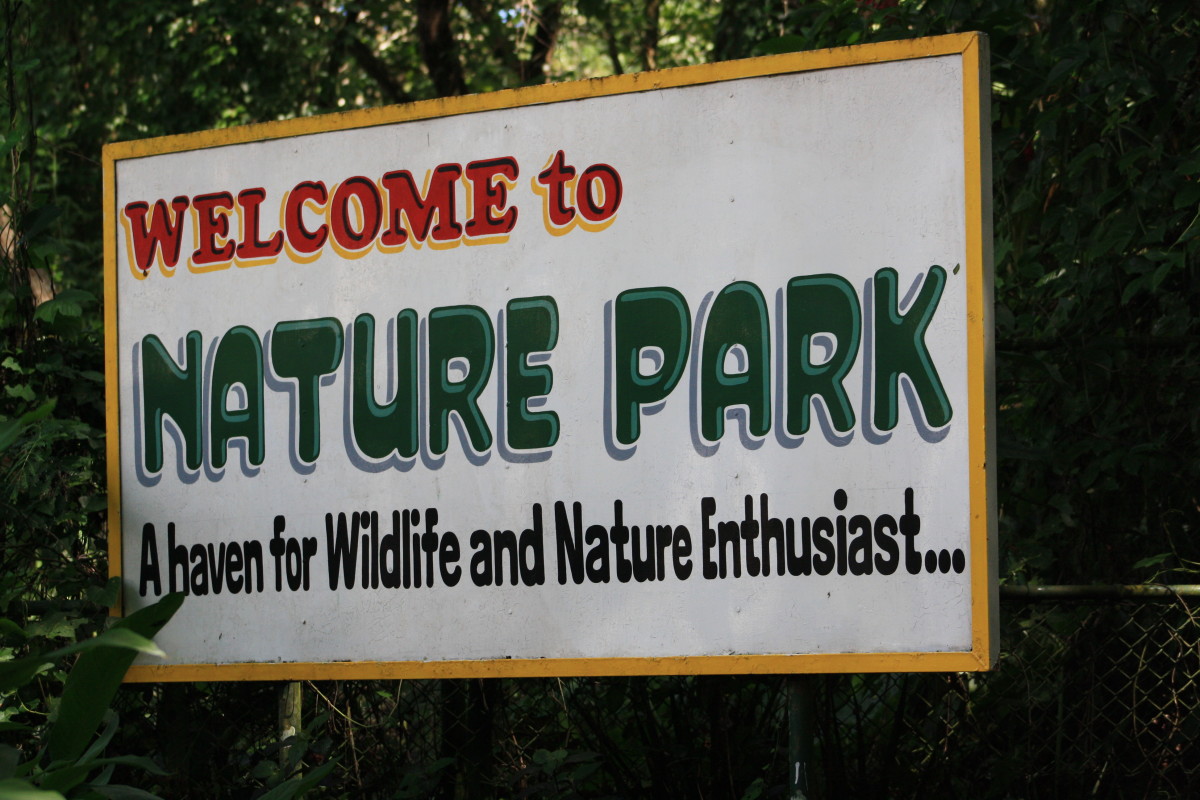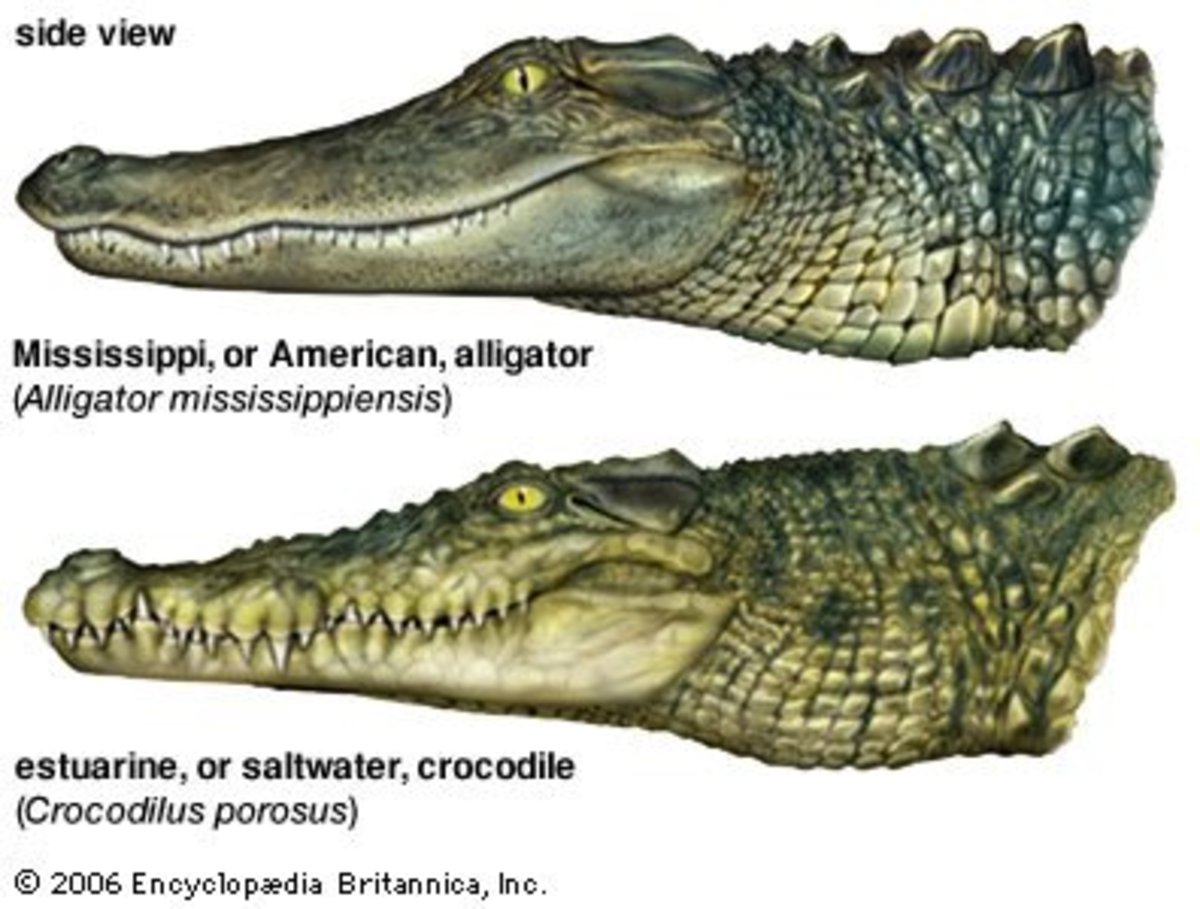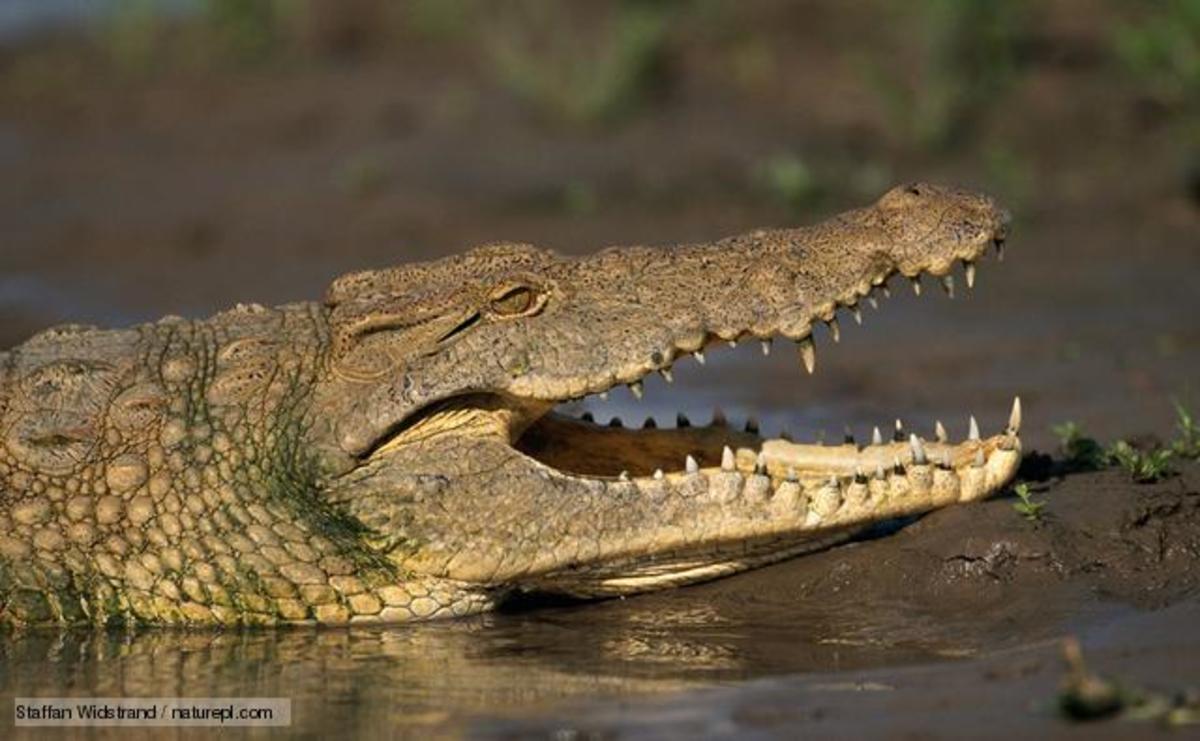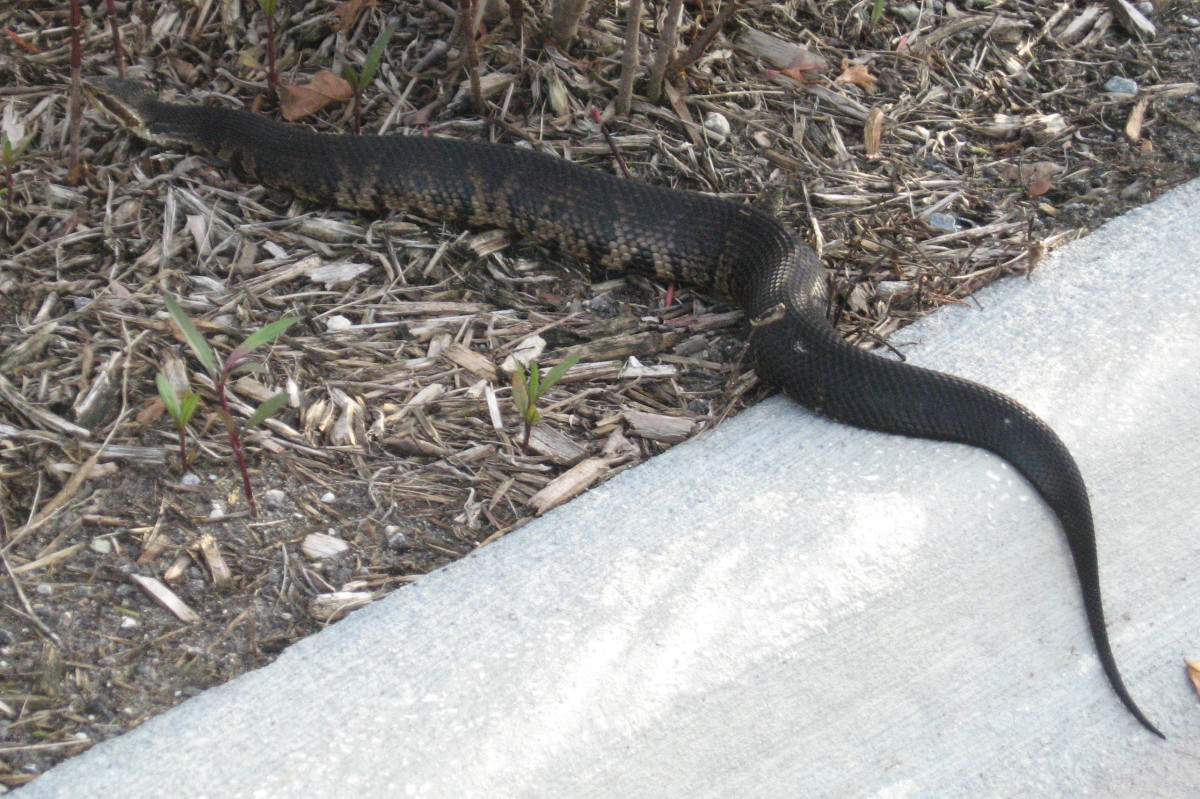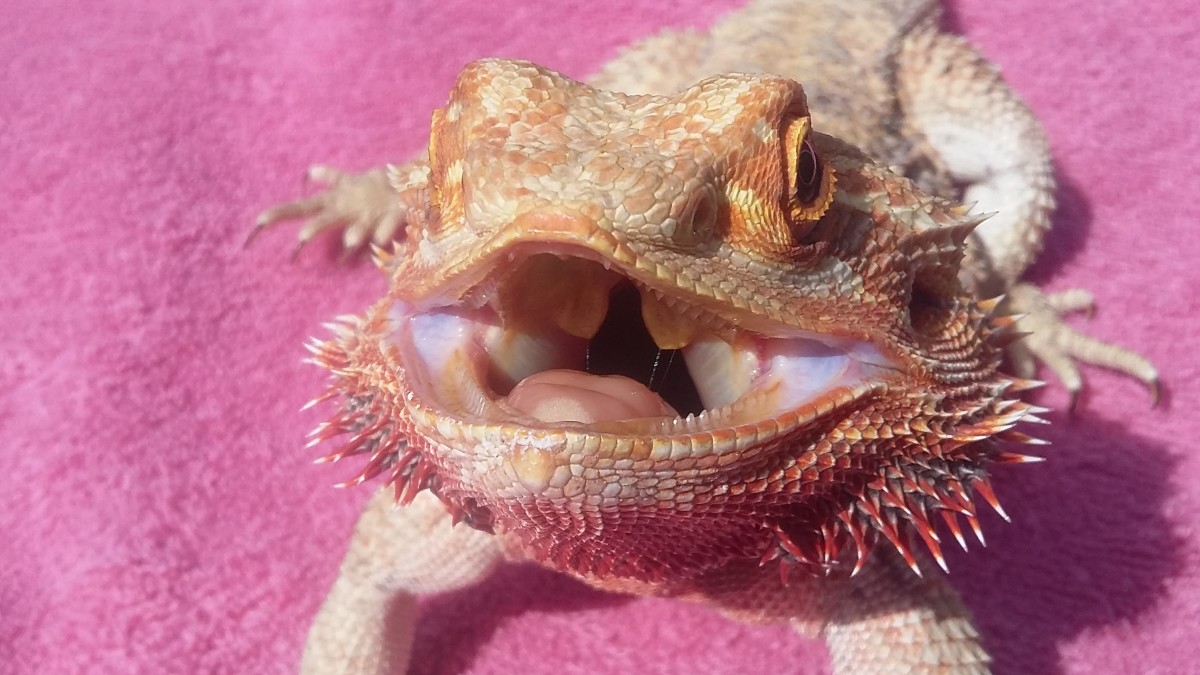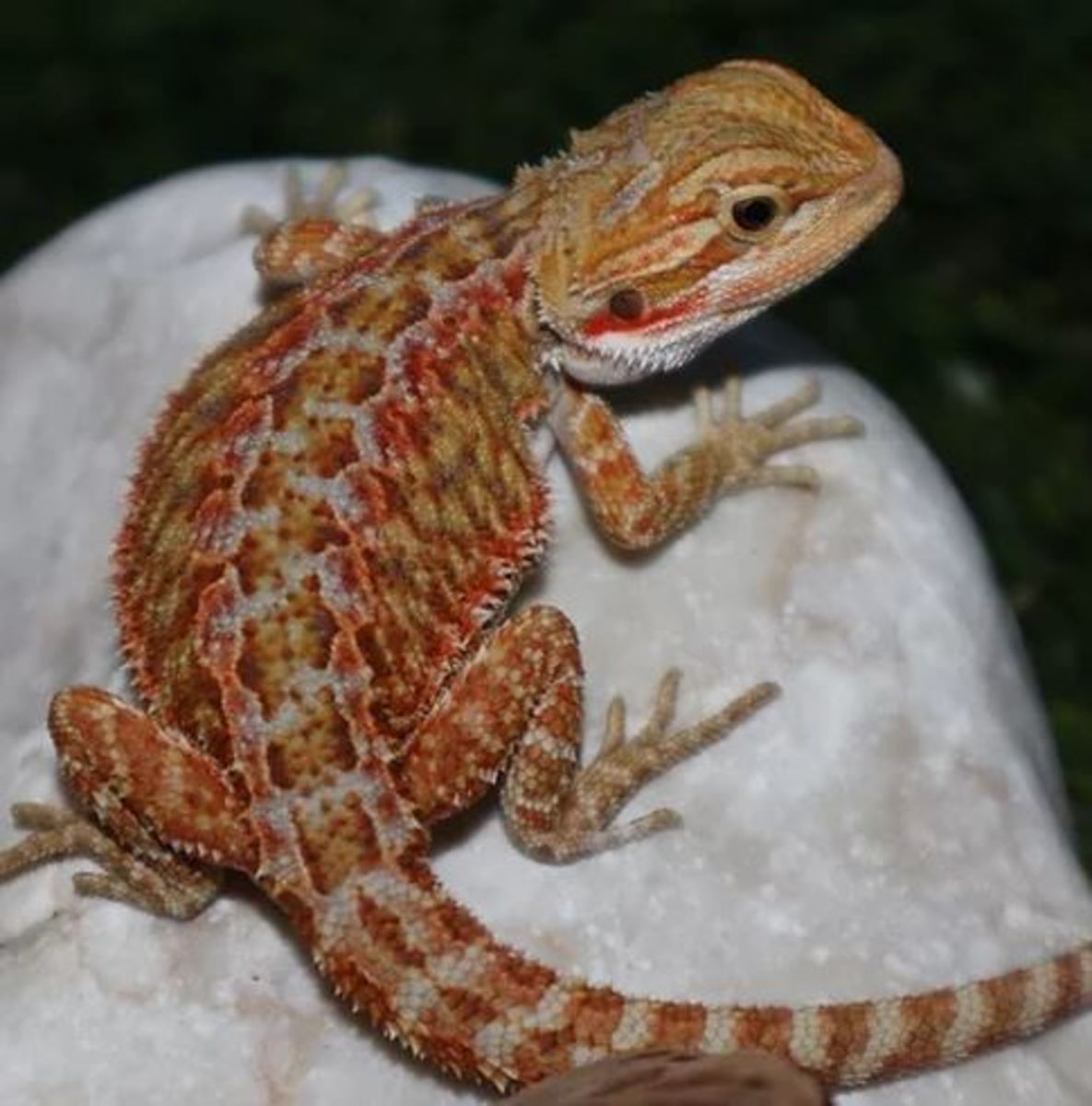Saltwater Crocodile
Scientific Name: Crocodylus porosus
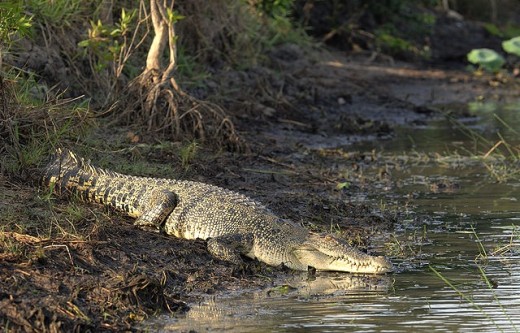
Description
Chances are you have heard about the Saltwater Crocodile due to the enormous size of it. This is one big reptile – with an average size of 1,000 pounds and 17 feet in length. The females are slightly smaller but still significant in size by any means. The largest ones have tipped the scales at 2,000 pounds though and a length of about 20 feet.
More Saltwater Crocodile Facts
- Facts about Crocodiles, Alligators, Caymans
Crocodile. Alligator and Caiman Facts and Information. Feeding, habitat, distribution, reproduction, anatomy and more. Facts about the Nile Crocodile, the Saltwater Crocodile, the Black Caiman, the American Alligator among others and the conservation - Alligator Hatchling - Facts and Information - The Portal of Life
Facts and Information about Alligator Hatchling. Alligator Hatchling Description, Behavior, Feeding and Reproduction.
Anatomy
Due to the huge size of them moving around on land is very difficult. They do so only to get sunlight and rarely for food. The females do so to lay their eggs. When they are on land they have to move along on their belly. They are very mobile in the water and can swim at amazing speeds for such a large animal. They conserve energy in the water too which reduces the need they have to feed.
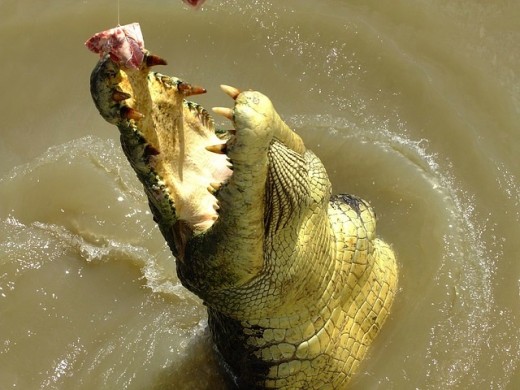
Interesting Links
- Facts and Information about Sharks
Information and facts about sharks. Sharks are one of the most amazing creatures in the earth. They have lived in the ocean for more than 450 million years and they have survived succesfully during this time.
Evolution
What is fascinating when it comes to the evolution of the Saltwater Crocodile is that there isn’t really a story to tell. What is it about their anatomy that allows these reptiles to continue to thrive regardless of the changes all around them? Why were they able to survive 65 million years ago when the dinosaurs were wiped out? That all remains a mystery that many experts would love to find the answers to.
Behavior
There is no denying that a huge part of them being able to thrive through the past 200 million years is due to their intelligence. While a big part of what they do is instinctive they also have the ability to learn, to memorize, and to solve problems. This has all been proven time and time again through a variety of tests. They use their knowledge of how other animals behave too in order to effectively take them down as prey.
Crocodile Information
Interesting Links
- Penguin Facts, Emperor Penguins, Adelie Penguins, King Penguins
Penguin Facts and Information. Feeding, habitat, distribution, reproduction, anatomy and more. Facts about Species like the Emperor Penguin, King Penguin, Humboldt Penguin and many others. - Seal Facts and Information
Facts and Information about Seals. Feeding, habitat, distribution, reproduction, anatomy and more. Facts about Species like the Harbor Seal, Harp Seal, Hawaiian Monk Seal, and many others. - Facts about Polar Bears
Polar Bear Facts and Information. Feeding, habitat, distribution, reproduction, anatomy and more. Also, the conservation efforts made to preserve Polar Bears and how humans have interacted with Polar Bears.
Habitat/Distribution
You will find the saltwater crocodile out there in areas of India, Australia, and Asia. They do primarily live in the saltwater but they can actually do well in freshwater too. In the past almost all of them lived in the saltwater. That has dramatically shifted though due to changes in their environment.
First, humans have resulted in their space being limited compared to what it used to be. At the same time these are aggressive animals that refuse to have their territory. What choice do the younger generations have but to move until they find a place they can call their own? It is often in the freshwater where they find a location they can inhabit and that also offers them enough food.
The conflicts that occur for this crocodile in areas where humans live is amazing. They continue to be criticized for killing humans and animals. Yet people refuse to see that these animals were living in such an environment first. The more people push into that territory the more they should expect such fatalities to increase. The Saltwater Crocodile is all about survival at any cost.
Diet/Feeding Habits
There are plenty of choices when it comes to food for these crocodiles. Of course due to their large size they often need to have substantial meals. That is why cattle, sheep, and even horses are prefect for them. They hide under the water and then grab them by the neck with powerful jaws. It is the holding them underwater that seals their fate in the end.
For the younger crocodiles that can’t take down such animals yet they may feed on monkeys, rodents, insects, and various types of fish. Many of these crocodiles eat every single day in a given location. Others only feed once a week and they are still able to survive. They can slow down their body functions so that they aren’t starving to death when food is in limited supplies.
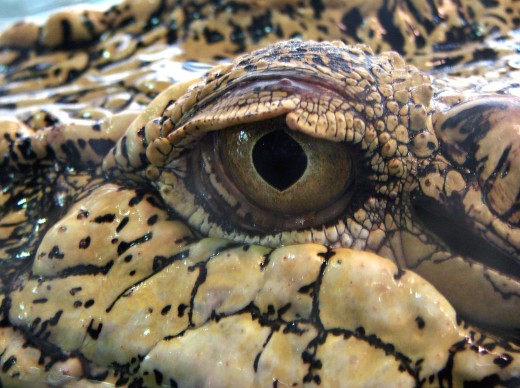
Reproduction
Mating doesn’t take place right away for the Saltwater Crocodile so they are very large before such urges take place. The males may be about 16 years of age before this occurs. For the males though it is often about 10 years of age. The males may travel quite a distance to find females to date with. When they do so they overlap with other males.
The aggressive nature of them is in high gear during mating season. The males may take on each other for hours at end before one of them moves on. Usually it is the one that is invading the others territory. In rare instance though there will be a physical confrontation that occurs.
Once a pair of Saltwater Crocodiles have successfully mated the female will have eggs that develop inside of her body. She will work on creating an amazing nest for them on the land. This way they are able to get the warmth they need during the 90 day incubation period. She may lay up to 60 eggs in that nest so it needs to be large enough for all of them. It can take her several weeks to create the nest using various products around here that are available.
Even though being on land is hard for her, she will come out of the water to stay with them as much as possible. When the heat is too much for her body or she needs food she will journey back to the water for a short period of time. As the young are being hatched she can gently remove them from the shells and take them back to the water with her. There is a huge mortality rate of close to 99% of these young crocodiles though.
Saltwater Crocodile Video
- Facts about Pollution | Effects of Pollution
Pollution Facts and Information. Effects of Pollution in the Environment
Predators
The main reason that they have such a high mortality rate is due to the variety of predators. There are plenty of birds and turtles that will consume these young. They can get to them before the mother can do much to protect them. Sometimes there are other reptiles that will eat them too.
The chances of a Saltwater Crocodile living to maturity increases though as they get larger. Then those types of predators know they can’t take a chance of being harmed or eaten themselves. Yet there are plenty of issues for these animals when it comes to humans. Due to the number of people killed annually by this crocodile there seems to be very few that care of they are hunted heavily or not.
Villagers often hunt them to feed their families and to keep the population low. They don’t want to have to worry about large numbers of these alligators in the bodies of water they go to for drinking or other needs. They will also gladly earn money by taking other hunters that aren’t familiar with the area to the location of the Saltwater Crocodiles.
Thousands of them are killed annually in order to use their skin to make leather goods. The larger size of these crocodiles means that their skins bring in more profits than those from other species. For those that take part in such dangerous hunting, they want to make sure they reap as much profits from their efforts as they possibly can.
They do have a good number in the wild at this time though in spite of all of that. There is an estimated 300,000 of them that continue to do well in their environment at this time. Only time will tell though if the efforts of humans prove to be too much for them to continue at such a high number or not.

